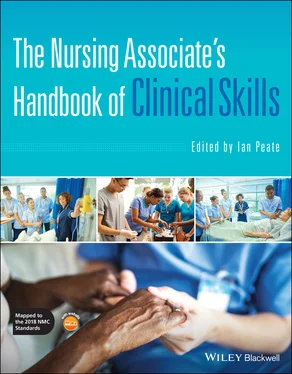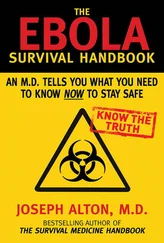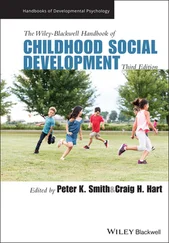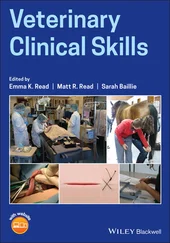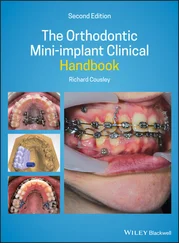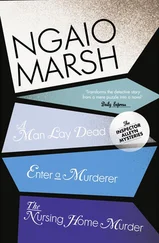The Nursing Associate's Handbook of Clinical Skills
Здесь есть возможность читать онлайн «The Nursing Associate's Handbook of Clinical Skills» — ознакомительный отрывок электронной книги совершенно бесплатно, а после прочтения отрывка купить полную версию. В некоторых случаях можно слушать аудио, скачать через торрент в формате fb2 и присутствует краткое содержание. Жанр: unrecognised, на английском языке. Описание произведения, (предисловие) а так же отзывы посетителей доступны на портале библиотеки ЛибКат.
- Название:The Nursing Associate's Handbook of Clinical Skills
- Автор:
- Жанр:
- Год:неизвестен
- ISBN:нет данных
- Рейтинг книги:4 / 5. Голосов: 1
-
Избранное:Добавить в избранное
- Отзывы:
-
Ваша оценка:
- 80
- 1
- 2
- 3
- 4
- 5
The Nursing Associate's Handbook of Clinical Skills: краткое содержание, описание и аннотация
Предлагаем к чтению аннотацию, описание, краткое содержание или предисловие (зависит от того, что написал сам автор книги «The Nursing Associate's Handbook of Clinical Skills»). Если вы не нашли необходимую информацию о книге — напишите в комментариях, мы постараемся отыскать её.
The Nursing Associate’s Handbook of Clinical Skills
The Nursing Associate’s Handbook of Clinical Skills
The Nursing Associate's Handbook of Clinical Skills — читать онлайн ознакомительный отрывок
Ниже представлен текст книги, разбитый по страницам. Система сохранения места последней прочитанной страницы, позволяет с удобством читать онлайн бесплатно книгу «The Nursing Associate's Handbook of Clinical Skills», без необходимости каждый раз заново искать на чём Вы остановились. Поставьте закладку, и сможете в любой момент перейти на страницу, на которой закончили чтение.
Интервал:
Закладка:
Professional Requirements
When considering record‐keeping, it is important to start with the Nursing and Midwifery Council’s (2018a) standards of proficiency for nursing associates that concludes that all nursing associates must keep clear and accurate records which are relevant to their practice, but while there is no specific professional document on keeping records, nursing associates must refer to The Code for guidance. Section 10 states that all nursing associates are to ‘keep clear and accurate records that are relevant to your practice’. The Code reminds the nursing associate that this applies to all records that are kept as part of the nursing associate’s role and is not limited to just patients’ records. The Code then lists a number of practical actions in subsections of Section 10.
The first subsection clarifies that every record must be made in a timely manner and as soon after the event as possible. This reminds the nursing associate that, as often as possible, records must be made at the time an event happens or as soon after it happens as possible. This is for several reasons but primarily as a record made while the sequence of events is fresh in the mind is probably going to be a more accurate record than one that is made later. This is just the same for a patient record as for an accident form or any other record. The second reason for making a timely record is a reminder that all records are made to improve patient safety. A record made in good time will help to prevent duplication of an episode of care. For example, if an action has been taken based on an old record rather than the latest episode of care, the patient could have the same drug administered twice or have the same referral made twice.
The next practical action listed in Section 10 is that the written record maintained by the nursing associate must ensure that all risks that have been identified or problems have been recorded along with the steps that have been taken to remedy these risks and problems. This action helps to ensure that other healthcare professionals who use the records have all the information that they need. One example of this is if the nursing associate identified that a patient was finding it difficult to mobilise with a walking stick, this would be recorded along with the fact that the patient had been referred to the physiotherapist. When the physiotherapist visits the patient, they can see clearly from the record what the problems were and why the referral had been made. Another application here that has to be considered is that if a patient was to make a claim of negligence regarding their care. The record relating to their care must clearly show that the nursing associate had identified the patient’s care need and reported it to the registered nurse in charge before recording this in the nursing notes. This would then demonstrate that a risk had been identified and appropriate steps had been taken to alleviate this risk.
The third practical action requires that all records must be completed accurately and without any falsification. It is not realistic to maintain records without ever making a mistake either by misspelling a word or by using a word that you did not mean to use in that context. Therefore, it will be necessary to mark a mistake or delete a word within a written record. This must be done by scoring through the mistake with a single line rather than obliterating the mistake with scribbles or correction fluid (liquid paper).
Take Note
 Mistakes must only be altered with a single line through the error and initials inserted. The nursing associate must not totally obliterate a word written in error.
Mistakes must only be altered with a single line through the error and initials inserted. The nursing associate must not totally obliterate a word written in error.
Supporting Evidence
In the rare case of needing to alter a record, the original entry must remain visible (draw a single line through the record), and the new entry must be signed, timed and dated (RCN 2015).
It is essential that all nursing associates do not falsify records either by recording that something has occurred when it has not or by falsifying or forging a signature attributing a record to another person for whatever reason. You may come across a record made by another healthcare professional that has not been signed by them. In a situation like this, do not consider putting their signature adjacent to the record; the two choices which could be followed are:
1 Alert the individual as soon as possible so that they can add the necessary signature to the record or
2 Where there is going to be a considerable gap in time before this signature can be entered, a senior nurse on the ward (or care area) must be advised, and appropriate action can be taken.
Blue Flag
 Nursing associate Lilly Myers is caring for a patient named Renuka in her own home. She had been off duty for three days; she looks at Renuka’s care plan and the documentation written by staff nurse Willis who had been caring for her over the previous three days and notices that the staff nurse has forgotten to sign the various entries she has made in Renuka’s nursing notes, in fact all of them. Lilly calls staff nurse Willis who is office based and explains the situation to her. Staff nurse Willis requests, ‘please can you sign the entries for me and when I get back off leave in two weeks I will counter sign’. Lilly refuses, and staff nurse Willis says in a rather harsh tone, ‘that is the last time I do you any favours, any way I am on leave now’. How do you think Lilly should proceed?
Nursing associate Lilly Myers is caring for a patient named Renuka in her own home. She had been off duty for three days; she looks at Renuka’s care plan and the documentation written by staff nurse Willis who had been caring for her over the previous three days and notices that the staff nurse has forgotten to sign the various entries she has made in Renuka’s nursing notes, in fact all of them. Lilly calls staff nurse Willis who is office based and explains the situation to her. Staff nurse Willis requests, ‘please can you sign the entries for me and when I get back off leave in two weeks I will counter sign’. Lilly refuses, and staff nurse Willis says in a rather harsh tone, ‘that is the last time I do you any favours, any way I am on leave now’. How do you think Lilly should proceed?
When the nursing associate is undertaking a programme of education leading to registration and is completing clinical learning outcomes during a clinical placement, it is important that only the allocated mentor or practice supervisor signs off the clinical learning outcomes as they are completed. The situation may arise where the student and the mentor discuss a clinical learning outcome, but then, the mentor forgets to sign. This is a form of record, as indicated by the NMC, which does not directly relate to patient care; however, this record does enable the student to progress to registration and then directly affect patient care. Therefore, it is essential that the student does not falsify this signature in this situation but requests the mentor to complete the record at their next meeting.
Section 10 requires that each nursing associate attribute any entry that they make in any paper or electronic records to themselves, in essence they own that entry. This is linked to the previous practical action very closely. If the record is paper based, then it is essential that the signature (or initials on certain records) is clearly identifiable and consistent. In many clinical areas, a register will need to be completed which allows the nursing associates to first clearly write their name and then adjacent to this enter a specimen of both their signature and their initials (see Figure 8.1).
This is a particularly useful approach to accountable record‐keeping when looking at records historically and examining records that have been made by agency or bank staff that may have only made a limited number of entries and indeed their signatures alone are not familiar.
If the record is made electronically, then it is essential that it be ‘signed’ by the correct author. This will require healthcare professionals to log off a computer and then log in with their own identity before making an entry; otherwise, the entry will be attributed to the healthcare professionals who have already logged into that recording device. While this signature or identity may not be seen by the individual making the entry, the computer system will record who was logged in as the person making the entry. This reinforces the importance of logging off from any device after a record has been made and also that the login details are not shared with another nurse or nursing associate so that any record subsequently made is attributed directly to the nursing associate who is identified as being logged on to the recording device.
Читать дальшеИнтервал:
Закладка:
Похожие книги на «The Nursing Associate's Handbook of Clinical Skills»
Представляем Вашему вниманию похожие книги на «The Nursing Associate's Handbook of Clinical Skills» списком для выбора. Мы отобрали схожую по названию и смыслу литературу в надежде предоставить читателям больше вариантов отыскать новые, интересные, ещё непрочитанные произведения.
Обсуждение, отзывы о книге «The Nursing Associate's Handbook of Clinical Skills» и просто собственные мнения читателей. Оставьте ваши комментарии, напишите, что Вы думаете о произведении, его смысле или главных героях. Укажите что конкретно понравилось, а что нет, и почему Вы так считаете.
